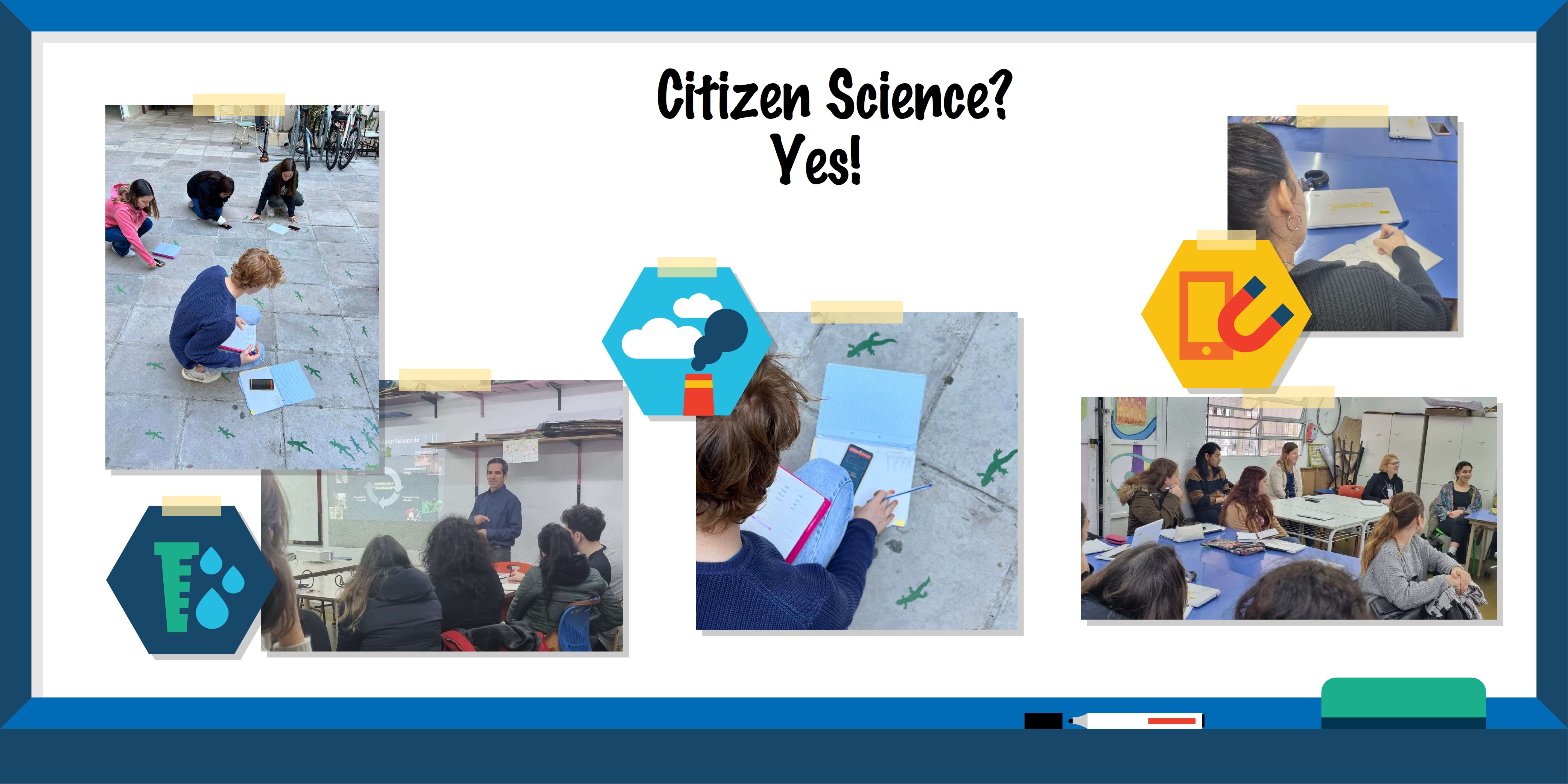A program that seeks to promote the integration of different subjects, teachers and students in interdisciplinary projects, capable of challenging girls, boys and adolescents to become active members of the research processes.
The schools of the City of Buenos Aires Incorporate citizen science into the classrooms
8 de Noviembre de 2023

Citizen science, which is based on the premise that we can all contribute to the building of knowledge in a participatory and collective manner, has great potential in the educational field. Why? Because citizen science can favor a didactic approach to science (concepts, processes, etc.), awaken scientific vocations early on, foster culture and curiosity for science, promote critical and creative thinking as well as socio-environmental awareness, and encourage a project-based learning approach where teachers facilitate the research process, and students produce knowledge in a participatory manner. This approach favors the integration of different subjects, teachers, and students in medium- to long-term multidisciplinary projects, capable of challenging children and teenagers to become -in the present- active members of the research process.
For all these reasons, UNDP allied with the Ministry of Education of the Government of the City of Buenos Aires to promote the emergence of Programa de Ciencia Ciudadana en la Escuela (Citizen Science in Schools Program), together with the Sea and Atmosphere Research Center (CIMA, by its Spanish acronym), the National Scientific and Technical Research Council (CONICET, by its Spanish acronym), the University of Buenos Aires (UBA, by its Spanish acronym), the Institute of Chemistry, Physics of Materials, Environment and Energy (INQUIMAE, by its Spanish acronym - CONICET - UBA) and the Physics Department of the School of Exact and Natural Sciences of the University of Buenos Aires, which shows that many of us (and counting…) are convinced of its potential.
This Program deploys three citizen science projects in 57 schools in order to work with more than 100 teachers and 1 000 students to measure the City's air quality using passive tubes installed in schools strategically distributed throughout the City; monitor, forecast and generate weather alerts linked to hydrometeorological events; and map the earth's magnetic field through a mobile application.
However, the “Citizen Science in Schools Program” is being implemented on a daily basis by teachers and students. It is precisely within these spaces that processes take place that allow us to reinforce the reason why we work so that citizen science continues to grow in Argentina. As an example, a technical school designed a project to inform and raise awareness about the various components present in the air. To this end, it developed its own low-cost air quality measurement sensor. Others are looking at how to build homemade rain gauges with everyday items, so children can take this activity home and do it as a family. Along the way, the Program also promoted an experimental attitude where teachers and students used homemade rain gauges of different sizes (cans, trays, etc.) to see if there are differences in the measurements generated, among other possibilities. In short, we are witnessing different processes of technology appropriation.
In addition, we have participated in workshops with professional scientists and teachers where the implementation of this Citizen Science Program was discussed with enthusiasm. One of the issues addressed was the possible errors in temperature measurements, which were actually within the expected range, given that they were taken inside a school, without being able to meet all of the international protocols for this type of measurement. What was interesting was the opportunity to identify that this restriction did not take away the value of the data collected. In fact, it is often recognized that, by gathering large volumes of data through citizen science, it is possible to obtain similar results than those reached through traditional approaches.
Bringing citizen science to schools also facilitated the bridging between the learning community and the scientific community, from a group of students who visited the School of Exact and Natural Sciences to understand how reagent data were analyzed in the laboratory, to another who gave a presentation on magnetic fields at the National Institute of Geography. These experiences of knowledge exchange will surely become lasting memories for their protagonists.
In short, citizen science provides students with valuable participatory and practical experiences that lead to learning based on the curiosity about their environment. And there we discover nothing new: any child or young person can ask questions, observe, collect data, discuss them with others and communicate their findings. A curious mind is inherent to human beings, and citizen science comes to remind us of that.

 Locations
Locations




